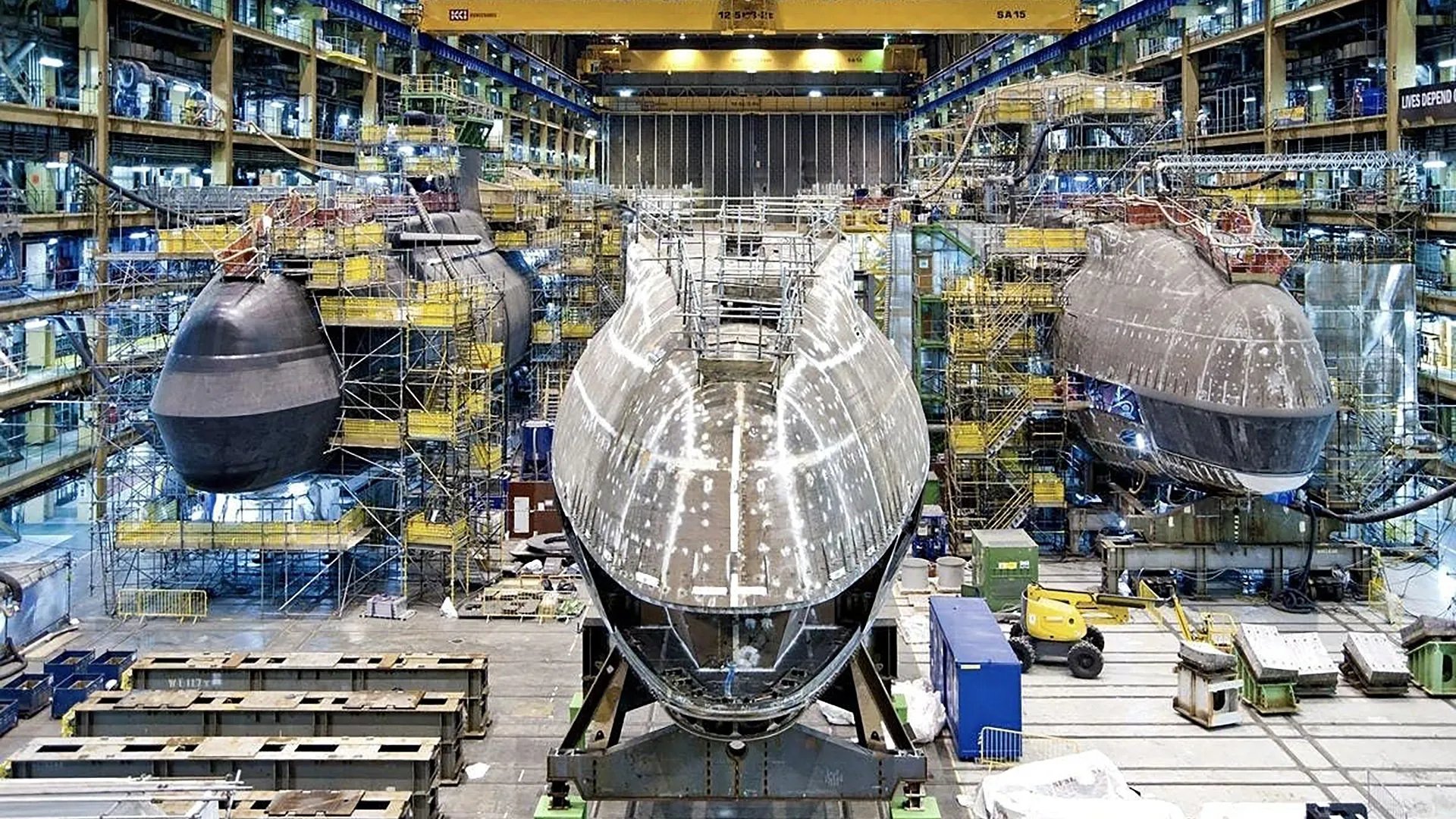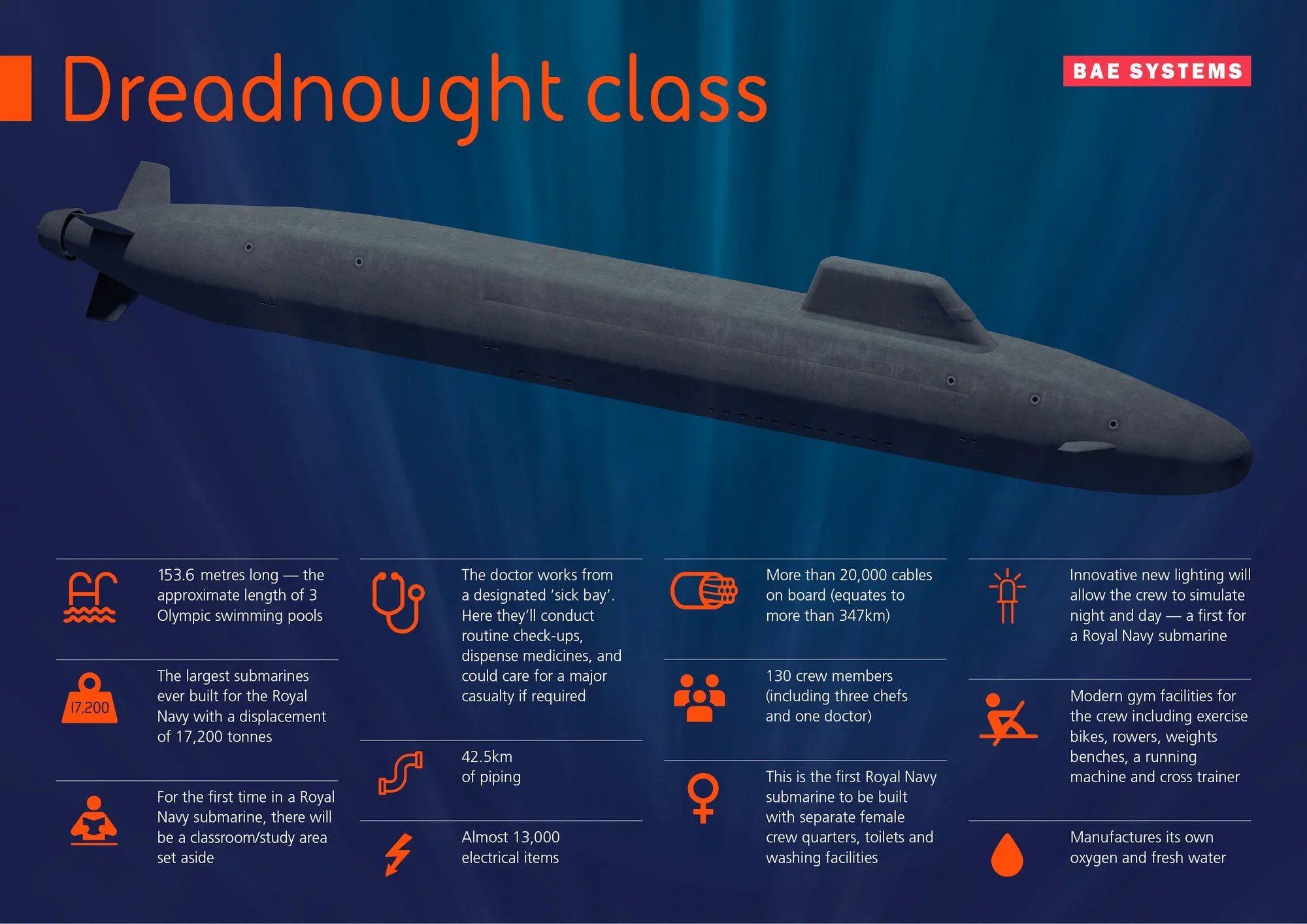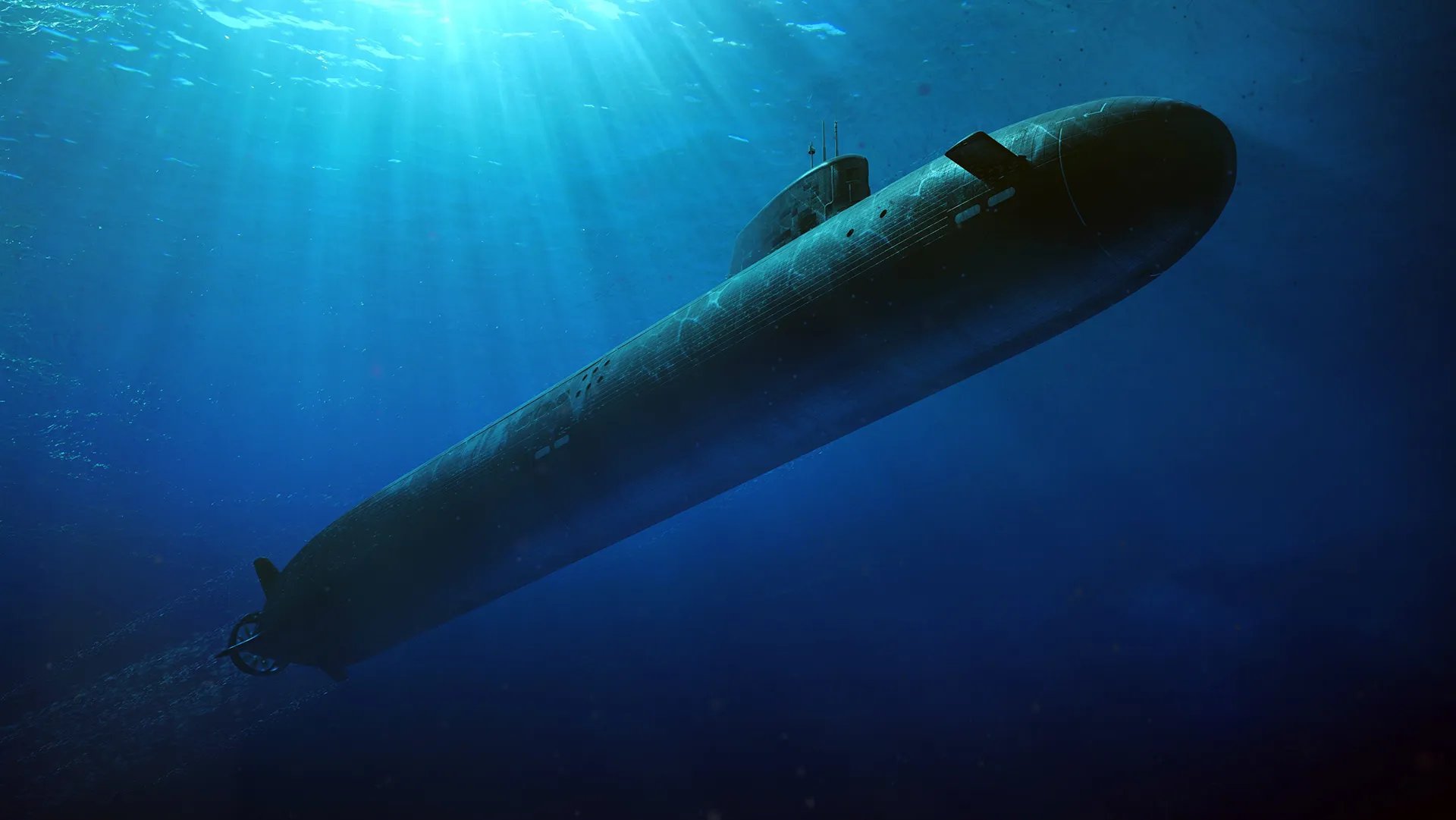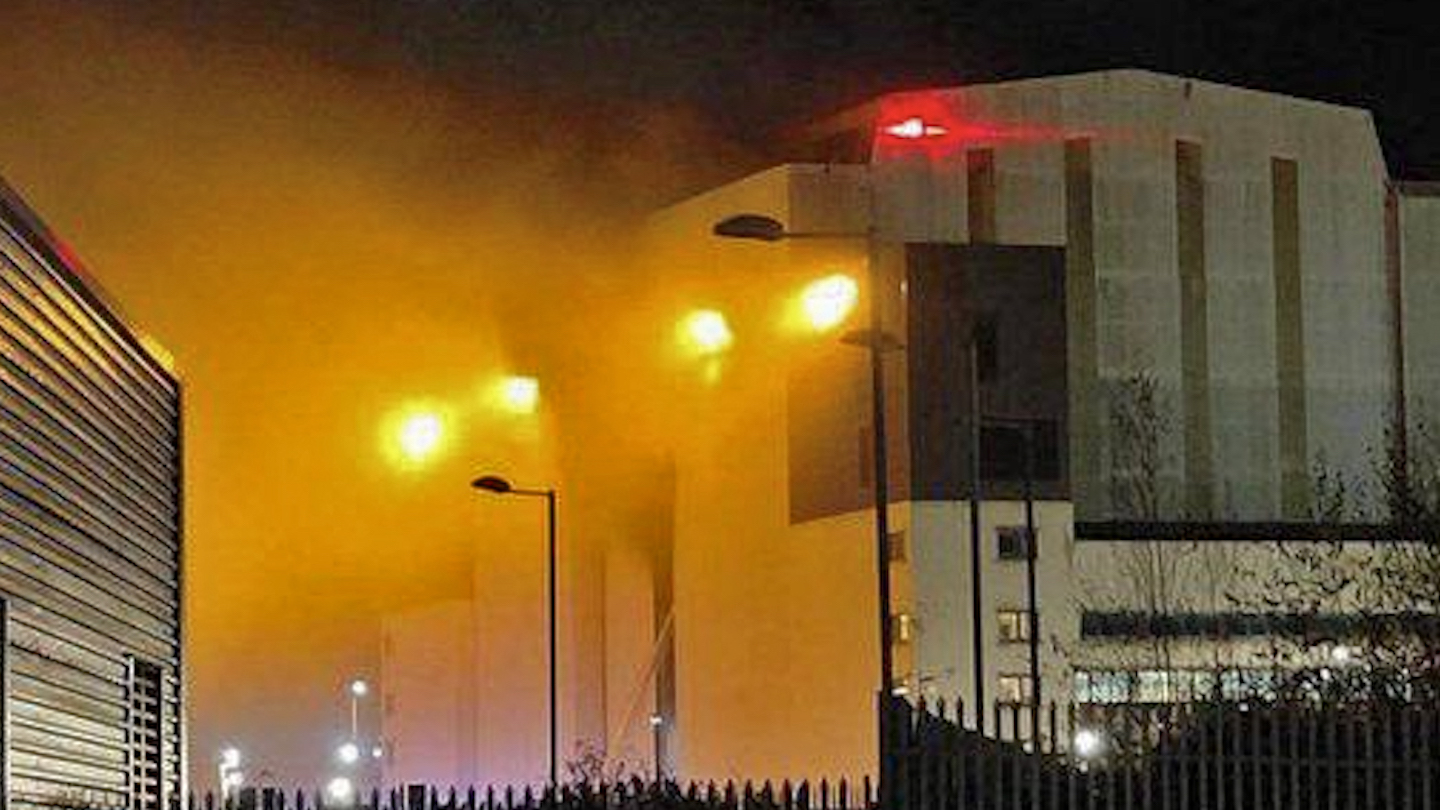A blaze has ripped through the BAE Systems’ nuclear submarine shipyard in Cumbria, England, a unique facility of major strategic importance where the U.K. Royal Navy’s Astute class nuclear-powered fast attack submarines and Dreadnought class nuclear-powered ballistic missile submarines are being built. While the cause of the fire is yet to be determined, it comes at a time of increasing concern about Russian-inspired sabotage activities across Europe.
The “significant” fire at the Devonshire Dock Hall (DDH) building, at BAE Systems’ complex in Barrow-in-Furness, in the northeast of England, started overnight.

Footage posted to social media shows long flames reaching into the sky and smoke billowing above the DDH building, one of the largest of its kind in Europe.
A woman living nearby, Donna Butler, 36, said: “My son came and got me and said that the BAE alarms were going off, so we went. When I opened the front door, we just saw a lot of black smoke. It was a lot of black smoke, like really thick black smoke, and it was very loud.”
At the time of the incident, around 200 people were working on the night shift.
A BAE Systems spokesperson said: “The area around the Devonshire Dock Hall has been evacuated and everyone has been accounted for. Two colleagues were taken to hospital having suffered suspected smoke inhalation and have both since been released.”
“At this time there are no other casualties and everyone else has been evacuated from the Devonshire Dock Hall and are accounted for,” the police said.
Although residents of the local area were told to stay indoors, the police said there was no radiation risk associated with the blaze. The police later said that residents should keep doors and windows closed, likely due to the risk of particles, especially from metals and other construction materials.
At this stage, the cause of the fire is unclear, although different naval sources and investigators have so far sought to play down the possibility that it might have been started deliberately.
A U.K. Ministry of Defense spokesperson said it was working closely with both BAE Systems and the emergency services and added: “We would like to thank the emergency services for their swift response and wish those who have required hospital treatment a quick recovery.”
The Cumbrian fire and rescue service also said an investigation into the cause of the fire was underway.
In the meantime, BAE Systems confirmed that work is continuing as normal elsewhere at the facility.
Reports suggest that, at the time of the incident, the nuclear-powered attack submarine (SSN) HMS Agincourt was in the DDH building, where it is being completed as the last of the seven-strong Astute class.

In this previous War Zone article, you can see three of the Astute class boats being built in the DDH building, back in 2019.
The sixth of the Astute class SSNs, HMS Agamemnon, was launched last month.
It’s unclear at this stage whether HMS Agincourt has received any damage in the fire. The completion of the boat is expected in 2026.

Once the Astute class attack submarines are completed, the DDH building will be the center of production for the new Dreadnought class SSBNs.
The Dreadnought class is scheduled to enter service starting in the early 2030s at a total estimated cost of around $43 billion. Armed with Trident submarine-launched ballistic missiles (SLBMs), the Dreadnoughts will replace a similar number of Vanguard class SSBNs now in Royal Navy service.

The DDH building is also set to be critical to the SSN-AUKUS line of submarines, future SSNs that will be delivered to the U.K. Royal Navy and the Royal Australian Navy. The first of these is planned to be delivered to the United Kingdom by the late 2030s, with the initial example for Australia being handed over in the early 2040s. You can read more about what we know of this tripartite effort — which also involves the United States — here.

As of today, non-essential staff working at the DDH building have been told to work from home on Wednesday and there is a report from the BBC that staff who did arrive at the site were confused as to which parts of the site were still accessible.
The DDH building is 167 feet tall and has internal working dimensions of 850 feet by 190 feet, providing a total area of 270,000 square feet.
Built in the first half of the 1980s, the building provides a fully protected working environment for nuclear submarine construction, without the need for slipways, and it also keeps sensitive construction activities hidden from intelligence-gathering satellites.
Only last month, plans were submitted for the further development of the site, with a new facility to be built, to serve as a pre-paint outfitting facility.

At this early stage, there is nothing to point to the blaze having been started deliberately, but the current security situation in Europe should also be considered.
There has been a recent spike in reports of sabotage at various military and defense-related installations across Europe. Some of these have been confirmed as being deliberate, while others have ultimately proven to be false alarms.
In April, for example, one of Norway’s most strategic air bases had a critical communications cable severed, with local police confirming this was deliberate.
This year has also seen incidents at other European NATO air bases — specifically in Germany — one of which remains unexplained, as well as troubling drone activity over critical infrastructure.

All these incidents come amid increasing warnings about nefarious Russian activity on the continent, part of an apparent wave of ‘hybrid warfare’ as East-West tensions continue to build, ramped up by the war in Ukraine.
Earlier this year, two German-Russian nationals were arrested in Germany on suspicion of plotting bomb and arson attacks, including on U.S. military facilities in the country, underscoring the reality of the threat.
Whatever the cause of the fire at the nuclear submarine shipyard in the United Kingdom, it’s a stark reminder of the potential vulnerability of critical military infrastructure, all the more relevant as NATO prepares itself for what is expected to be an expanding campaign of sabotage across Europe, a new wave of hybrid warfare masterminded by Russia.
As for the Devonshire Dock Hall, this is a gigantic and strategic facility for the United Kingdom’s Ministry of Defense and the industry it depends on and is vital for the future of the country’s strategic deterrent and submarine programs. Any kind of longer-term disruption to its activities will be keenly felt.
Contact the author: thomas@thewarzone.com
